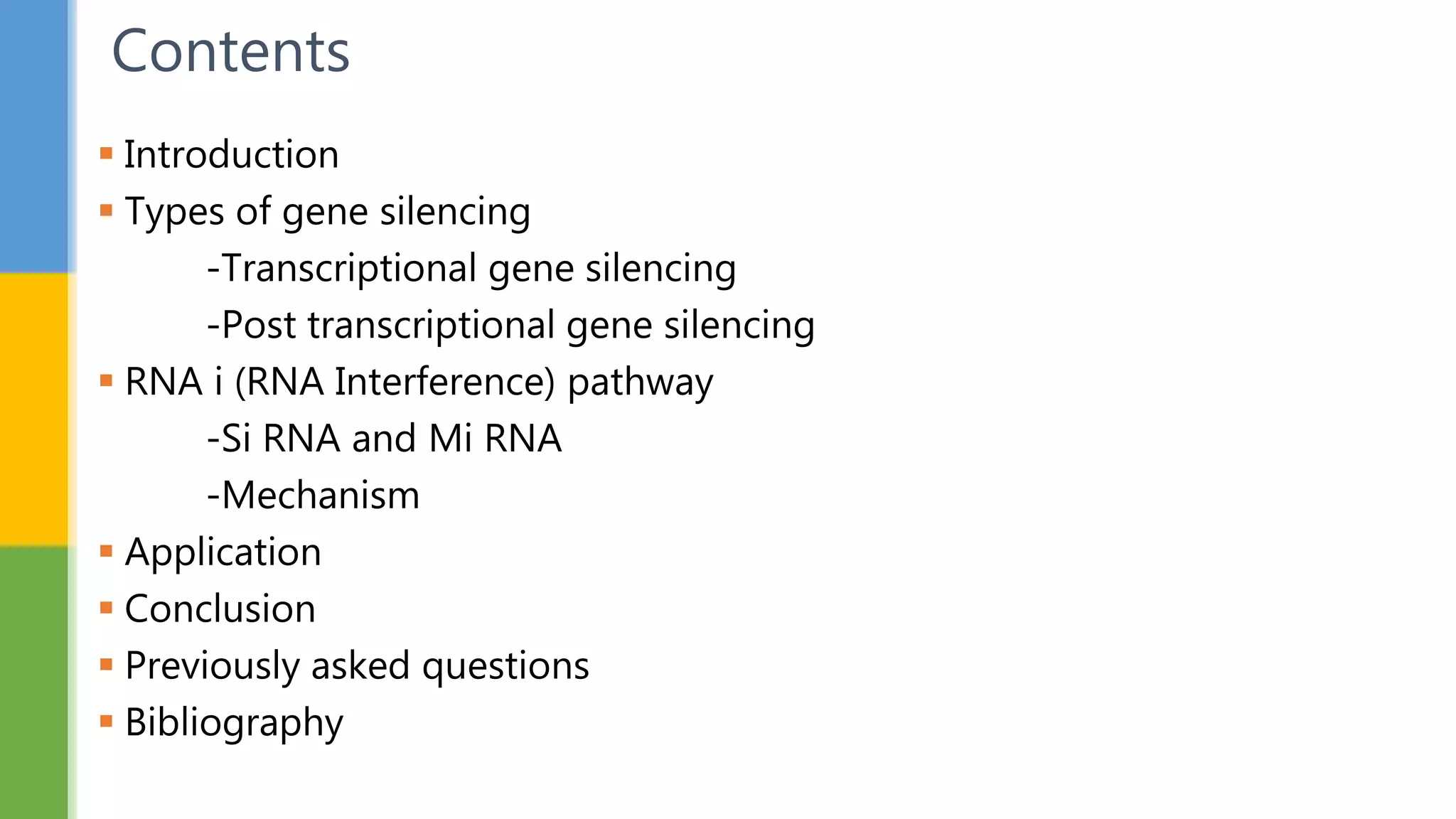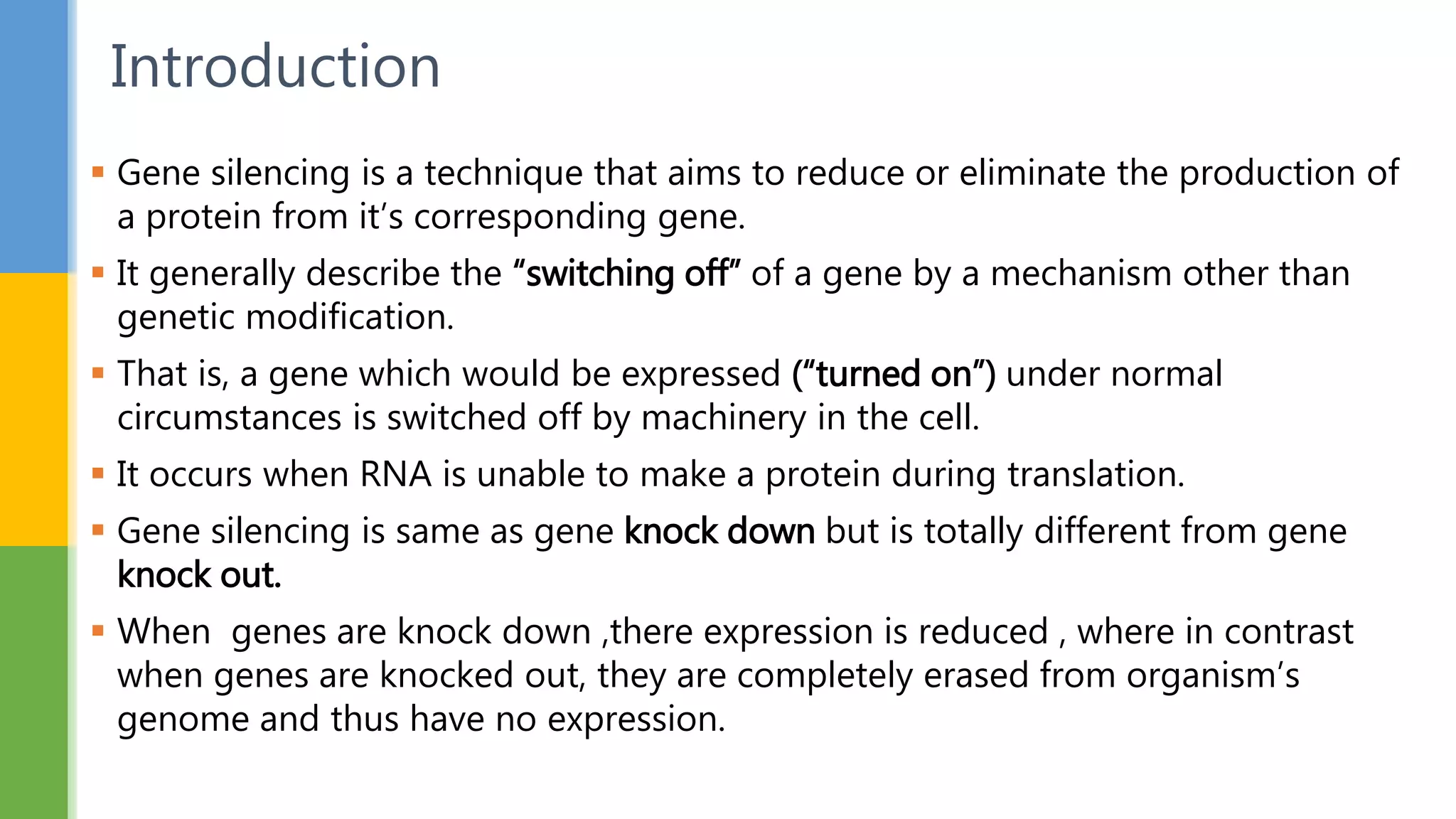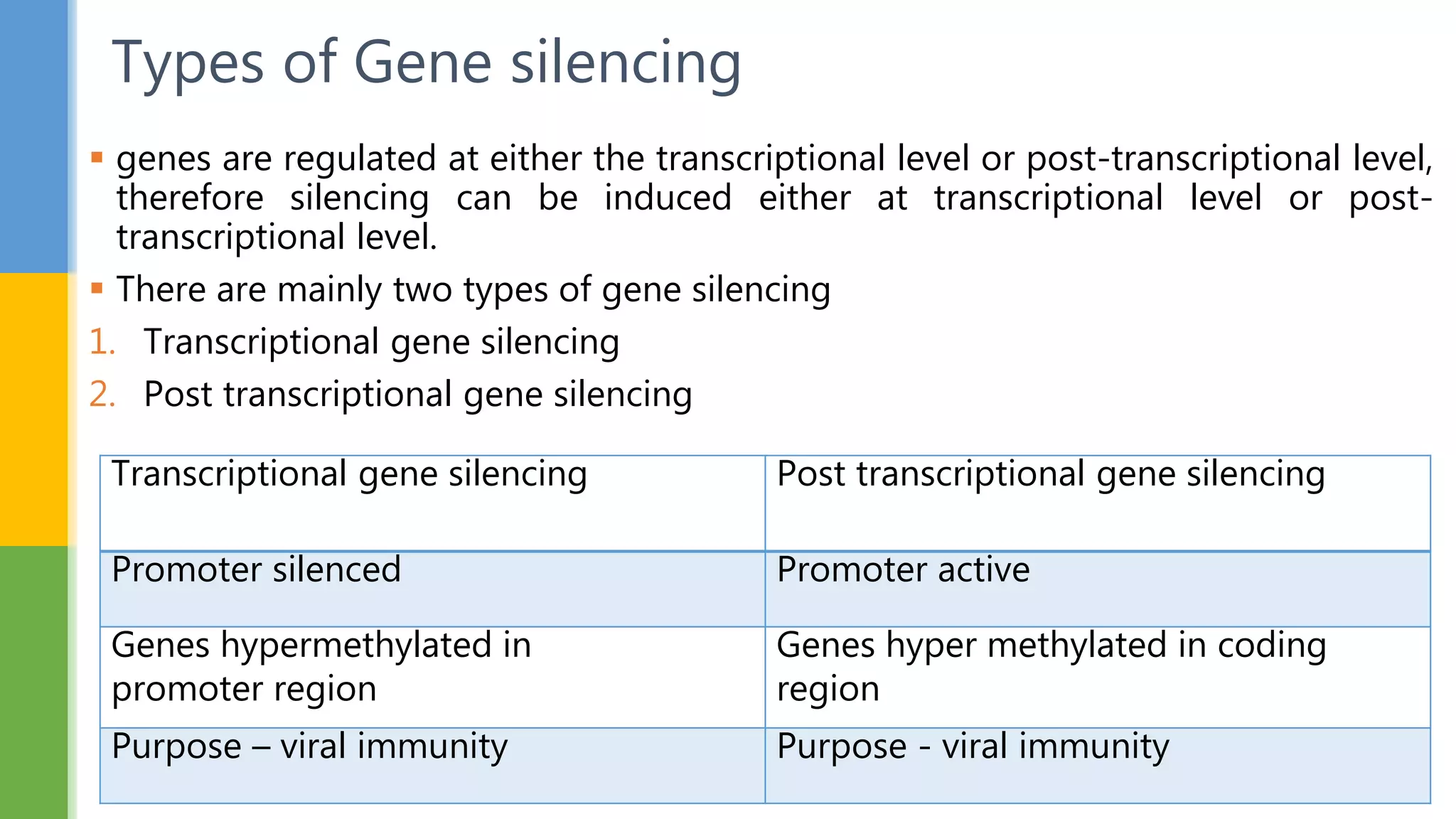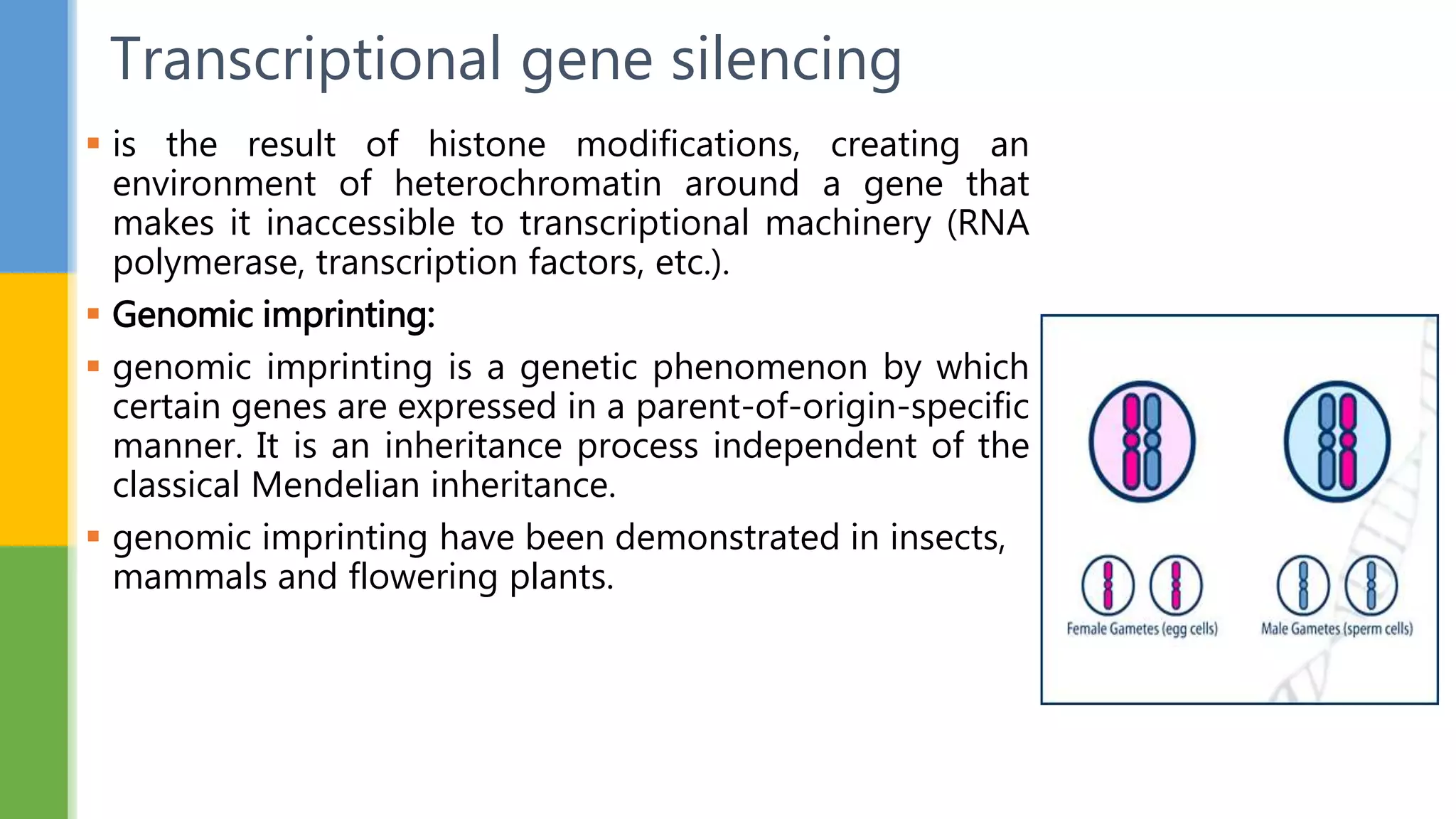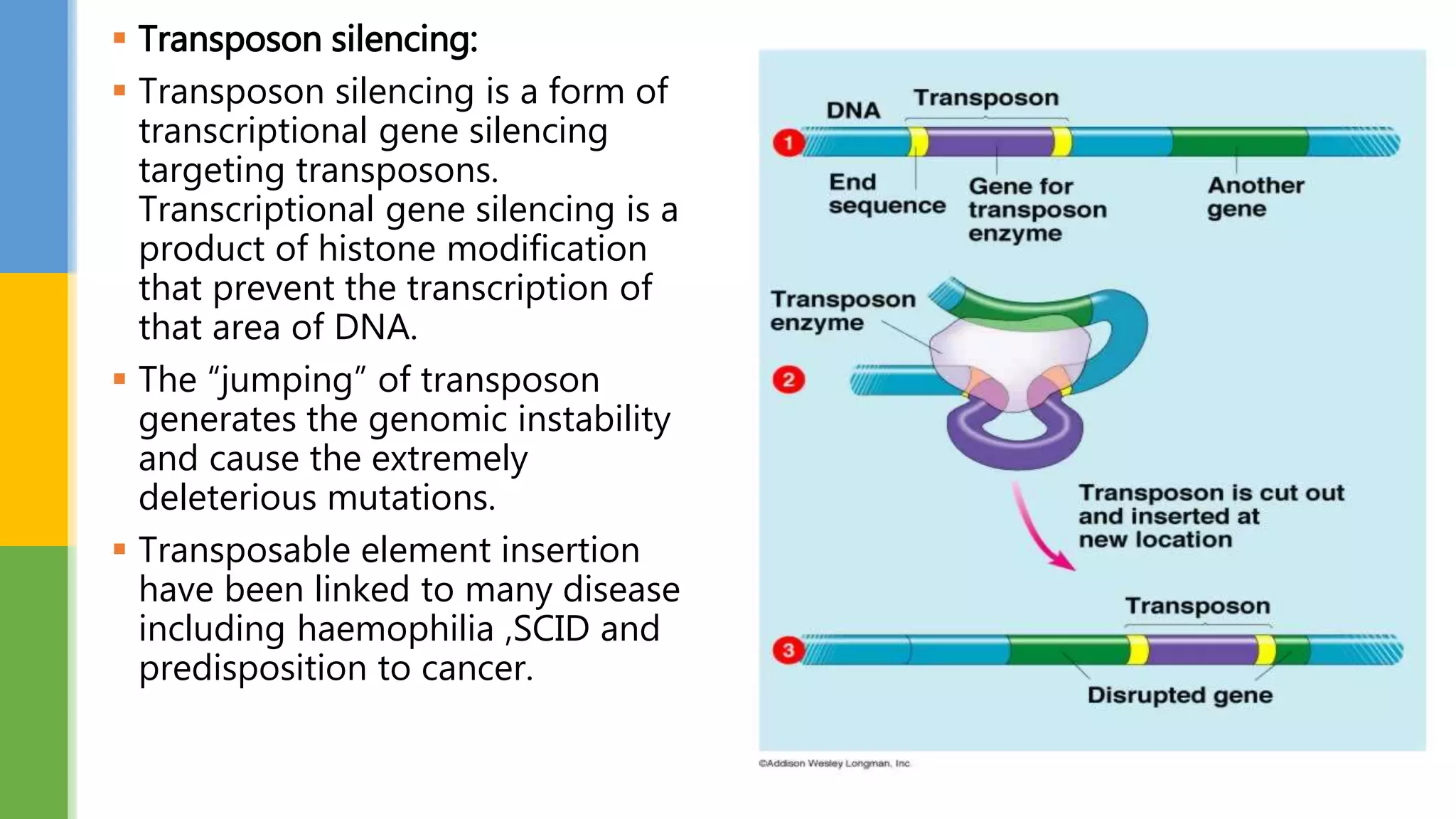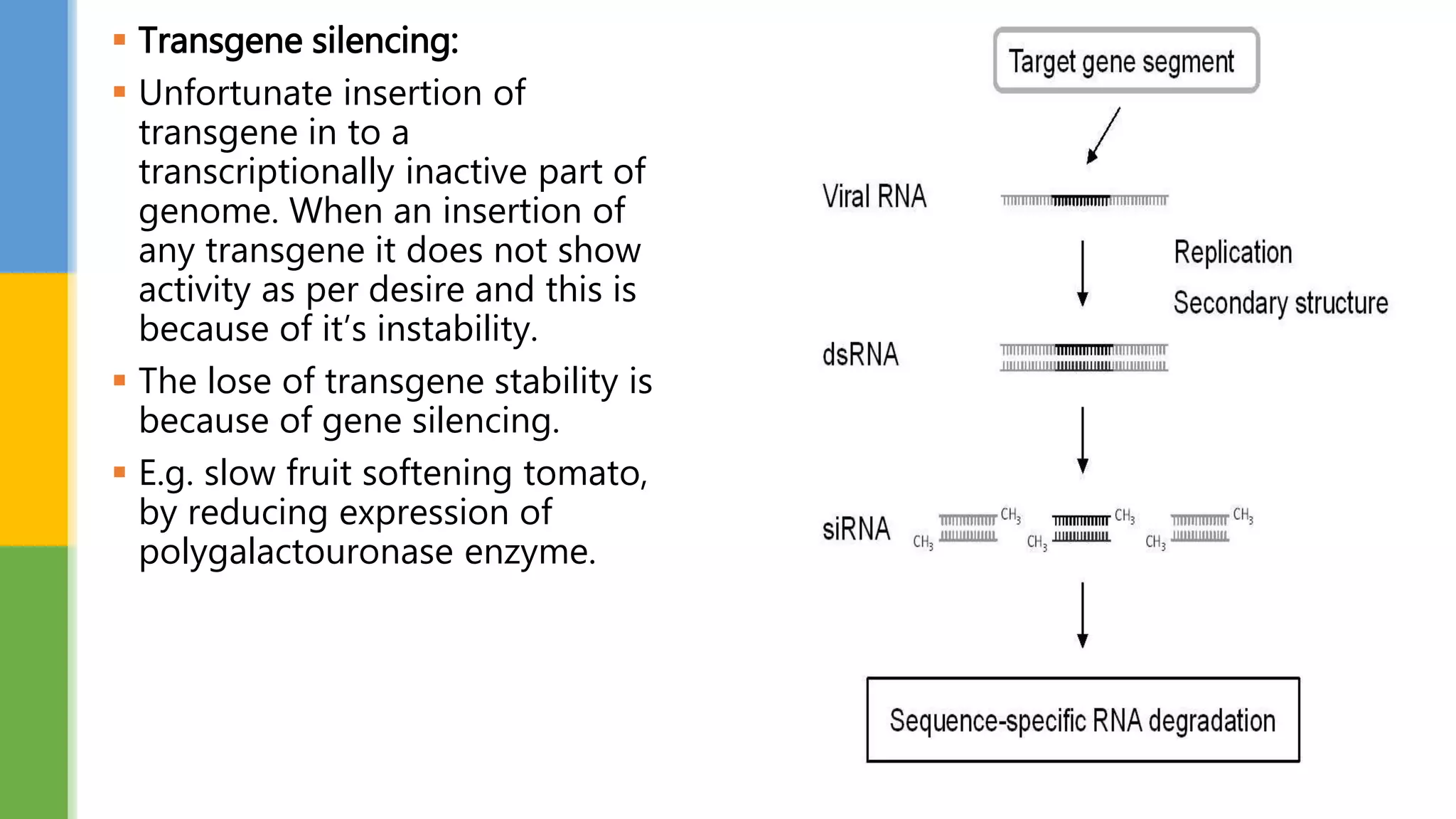The document discusses gene silencing, a technique to reduce or eliminate protein production from specific genes without altering the genome. It outlines the mechanisms of transcriptional and post-transcriptional gene silencing, including RNA interference (RNAi), highlighting its applications in cancer treatment, biotechnology, and agriculture. The document also addresses the advantages and disadvantages of gene silencing techniques and includes a brief history and fundamental concepts of the underlying processes.

